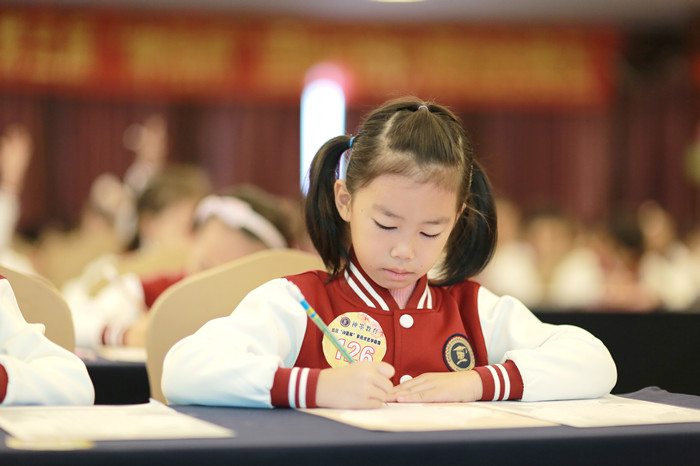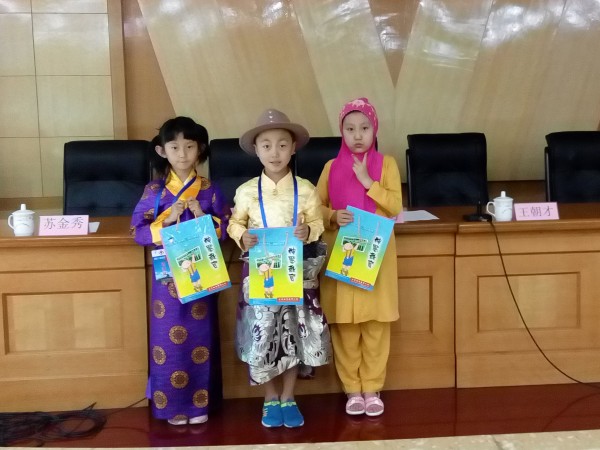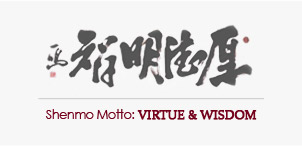SHENMO MOTTO: Virtue & Wisdom

-
Can Calligraphy Cultivate Your Mind? Find Answer Here
2018-11-26 丨
The writer is from the Ministry of culture development

Calligraphy is the quintessence of the Chinese nation. There is a long history of development from the formation of the original Chinese characters to the perfection of calligraphy. In the long-standing development of language and Chinese characters, there are many great calligraphers with different chirography styles and excellent academic performances and moral qualities in all dynasties. Both their spirits of hard work and their principles of personal conduct set examples for us.
For instance, Wang Xizhi polluted the pool in his yard after washing his toothbrushes and inkstones for hundreds of thousands of times; Zhiyong, a monk in Sui Dynasty, buried his discarded brush heads, which were so many that it seemed like a tomb; Huai Su, born in Tang Dynasty, planted plantain trees to practice calligraphy on the leaves; Yan Zhenqing would rather die than fall in his political career.... These ancient deeds appeal children a lot in cultivating lofty morality and perseverance.
Practicing calligraphy needs hard work—to practice skills on one hand, and to cultivate mind on the other hand.
Mi Fu, the calligrapher and painter in Northern Song Dynasty, was not rich when he was a child. He learned calligraphy in a private school for three years. Although paying many tuitions, he made little improvement. One day, he overheard that there was a xiucai who wrote calligraphy well, so he went to ask him for advice.
After reviewing Mi Fu’s works, the xiucai said, “If you can buy my paper, I will teach you. By the way, my paper is very expensive, 500g silver per piece” Mi Fu was astonished by the high price, but he was so eager to learn that he borrowed silver and gave it to the xiucai. The xiucai gave Mi Fu a piece of paper, saying, “Go back and write on it. Hand in it to me three days later.”
When Mi Fu got home, he scrutinized the expensive paper and hesitated to write on it; by imitating the copybook, he used the pen without ink to write on the desk repeatedly, and bore every character in his mind.
Three days later, the xiu cai came, seeing Mi Fu sitting at the desk, holding the toothbrush in his hand, and watching the copybook, leaving the paper blank, so he pretended to be shocked: “why hadn’t you write it yet?” Mi Fu gathered his senses, and realized that the three-day deadline was over. He muttered: "I don’t want to waste the paper." The xiucai laughed loudly, pointed at the paper with a folding fan and said, "never mind, since you have researched it for three days, write a character for me!”
As soon as the voice fell, Mi Fu wrote a character “永” (which is Yong in Pinyin, meaning “forever”). Seeing the powerful character, the xiucai asked: "Why didn’t you make any progress in the past three years, but make huge progress in three days?" Mi Fu thought about it: “Because this paper is expensive, so I don’t want to write on it casually. I’d like to think it over before I write it down.”
“That’s the way!” The xiu cai said: “you should learn calligraphy by heart. Only when you ponder its essence can you learn it well.” After that, the xiu cai added seven Chinese characters behind “永”: (永)志不忘,文银五两 (meaning “remembering the essence of learning bought at the price of 500g silver”). Then he took out the 500g silver from his pocket and gave it back to Mi Fu. Finally he left without hesitation.
Calligraphy can broaden the horizon, develop intelligence, and develop potential; in fact, the advantage of learning calligraphy is not only “practicability”, but also its greater significance in the process of practicing calligraphy (writing Chinese characters), namely, cultivating sentiment, cultivating aesthetic ability, and improving cultural accomplishment.
Chinese characters are a kind of culture. For a nation, its characters have distinctive cohesive force. As all Chinese characters accumulate the wisdom and essence of the Chinese nation in the past thousands of years, and also embody the national spirits, teaching children to write Chinese characters allows them to experience the national culture, national thoughts, and national spirits.
For instance, Wang Xizhi polluted the pool in his yard after washing his toothbrushes and inkstones for hundreds of thousands of times; Zhiyong, a monk in Sui Dynasty, buried his discarded brush heads, which were so many that it seemed like a tomb; Huai Su, born in Tang Dynasty, planted plantain trees to practice calligraphy on the leaves; Yan Zhenqing would rather die than fall in his political career.... These ancient deeds appeal children a lot in cultivating lofty morality and perseverance.
Practicing calligraphy needs hard work—to practice skills on one hand, and to cultivate mind on the other hand.
Mi Fu, the calligrapher and painter in Northern Song Dynasty, was not rich when he was a child. He learned calligraphy in a private school for three years. Although paying many tuitions, he made little improvement. One day, he overheard that there was a xiucai who wrote calligraphy well, so he went to ask him for advice.
After reviewing Mi Fu’s works, the xiucai said, “If you can buy my paper, I will teach you. By the way, my paper is very expensive, 500g silver per piece” Mi Fu was astonished by the high price, but he was so eager to learn that he borrowed silver and gave it to the xiucai. The xiucai gave Mi Fu a piece of paper, saying, “Go back and write on it. Hand in it to me three days later.”
When Mi Fu got home, he scrutinized the expensive paper and hesitated to write on it; by imitating the copybook, he used the pen without ink to write on the desk repeatedly, and bore every character in his mind.
Three days later, the xiu cai came, seeing Mi Fu sitting at the desk, holding the toothbrush in his hand, and watching the copybook, leaving the paper blank, so he pretended to be shocked: “why hadn’t you write it yet?” Mi Fu gathered his senses, and realized that the three-day deadline was over. He muttered: "I don’t want to waste the paper." The xiucai laughed loudly, pointed at the paper with a folding fan and said, "never mind, since you have researched it for three days, write a character for me!”
As soon as the voice fell, Mi Fu wrote a character “永” (which is Yong in Pinyin, meaning “forever”). Seeing the powerful character, the xiucai asked: "Why didn’t you make any progress in the past three years, but make huge progress in three days?" Mi Fu thought about it: “Because this paper is expensive, so I don’t want to write on it casually. I’d like to think it over before I write it down.”
“That’s the way!” The xiu cai said: “you should learn calligraphy by heart. Only when you ponder its essence can you learn it well.” After that, the xiu cai added seven Chinese characters behind “永”: (永)志不忘,文银五两 (meaning “remembering the essence of learning bought at the price of 500g silver”). Then he took out the 500g silver from his pocket and gave it back to Mi Fu. Finally he left without hesitation.
Calligraphy can broaden the horizon, develop intelligence, and develop potential; in fact, the advantage of learning calligraphy is not only “practicability”, but also its greater significance in the process of practicing calligraphy (writing Chinese characters), namely, cultivating sentiment, cultivating aesthetic ability, and improving cultural accomplishment.
Chinese characters are a kind of culture. For a nation, its characters have distinctive cohesive force. As all Chinese characters accumulate the wisdom and essence of the Chinese nation in the past thousands of years, and also embody the national spirits, teaching children to write Chinese characters allows them to experience the national culture, national thoughts, and national spirits.

-
NEXT:
Shining like a Master--Jerry's Adventur... On Dec 17, 2018 >
LATEST

- First Online Shenmo Training for Ru On Mar 29, 2021

- Online Shenmo Entrepreneurship Exchange Meeting On Mar 29, 2021

- First Shenmo Online Abacus Mental M On Feb 03, 2021
EVENTS
Combination of Traditional Culture and Mo On Jun 02, 2020
Shenmo News:Shenmo Nigeria Abacus Mental On Oct 23, 2019
Shenmo News:The delegation of the 1st On Oct 21, 2019







